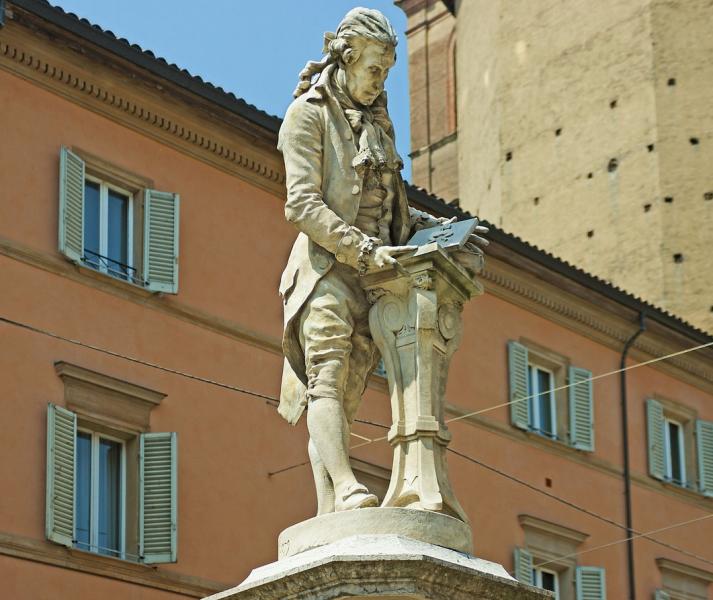- Read offline
- Access all content
- Use the in-app Map to find sites, and add custom locations (your hotel...)
- Build a list of your own favourites
- Search the contents with full-text search functionality
- ... and more!
Luigi Galvani
Father of Bioelectricity

The marble fellow contemplating a pair of frog's legs in Piazza Galvani in front of the Archiginnasio is not a French chef contemplating a new dish, but Luigi Galvani (1737-98), a native of Bologna. A skillful surgeon and lecturer in theoretical anatomy at the University who was appointed to the Academy of Sciences in 1776, Galvani was performing experiments using the electric current delivered by a Leyden jar (a rotating static electricity generator), when he made his great discovery of bioelectricity. When he applied the current to the muscles or the nerve in the frogs' legs, they contracted.
As is so often the case, however, it was only by accident that Galvani made his breakthrough, when his assistant accidentally touched the brass conductor of the generator while cutting a frog's legs with a steel scalpel. The frog's legs were 'galvanised' into twitching violently, even though they were no longer attached to the frog. Galvani conducted further experiments with the nerves and muscles in frogs' legs and called the phenomenon 'animal electricity', proposing that it passed into the muscles through a fluid carried by the nerves. Although he didn't get it quite right, his work became the basis of the biological study of nerves as conductors of electricity (the impulses in fact were too small to be measured by 18th-century equipment).
Image by Didier Descouens, Creative Commons License

